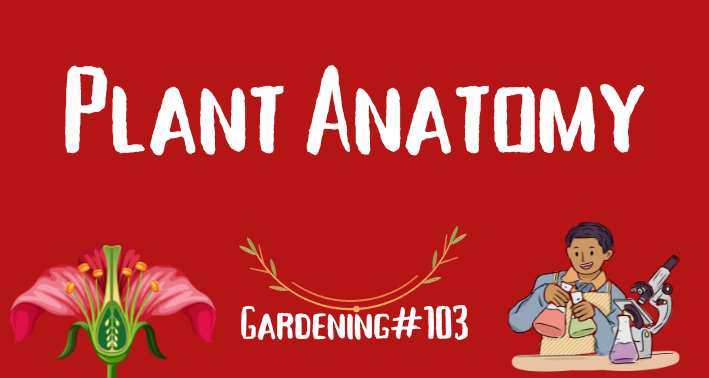Plant anatomy is a branch of botany that deals with the structure and organization of plants at the cellular, tissue, and organ levels. It encompasses the identification, classification, and description of plant parts, such as leaves, stems, roots, and flowers, and the functions they perform, such as photosynthesis, respiration, and reproduction. It is an important field in plant science and provides a foundation for understanding the function of different plant parts. Some of the main topics included in plant anatomy are:
- Cells: The basic unit of plant structure, including the cell wall, cell membrane, and organelles.
- Tissues: The different types of plant tissues, including meristematic, ground, and vascular tissues.
- Roots: The structure and organization of the root system, including root hairs, the root cap, and the apical meristem.
- Stems: The structure and organization of the stem, including the epidermis, cortex, vascular bundles, and pith.
- Leaves: The structure and organization of leaves, including the epidermis, mesophyll, and veins.
- Flowers: The structure and organization of flowers, including the different parts such as petals, sepals, stamens, and pistils.
- Fruits: The structure and organization of fruits, including the different types such as fleshy fruits, dry fruits, and aggregate fruits.
- Seeds: The structure and organization of seeds, including the seed coat, endosperm, and embryo.
- Microscopic anatomy: The use of microscopes to study the detailed structure of plant cells and tissues.
- Comparative anatomy: The comparison of the anatomy of different plant species to understand their evolutionary relationships.
Plant anatomy is an essential field of study in botany, providing a deeper understanding of the adaptations, growth, and development of plants. By examining the internal structure of plants, plant anatomists can identify specialized cells, tissues, and organs that perform specific functions, such as the mesophyll cells in leaves that carry out photosynthesis or the vascular tissues in stems that transport water and nutrients throughout the plant.
Plant anatomy is also crucial for plant breeding, biotechnology, and agriculture. By understanding the structure and function of plants, plant scientists can develop new crops with improved traits, such as disease resistance or higher yields, and develop new biotechnological applications, such as genetic engineering. Additionally, plant anatomy provides insights into the impact of environmental factors, such as climate change, on plant growth and development.
Overall, plant anatomy is a fascinating and essential field of study that provides insights into the structure and function of plants, their adaptations to the environment, and their significance in various fields, including medicine, agriculture, and biotechnology.


One response
[…] Plant anatomy: The study of the structure and organization of plant tissues, including leaves, stems, and roots. […]